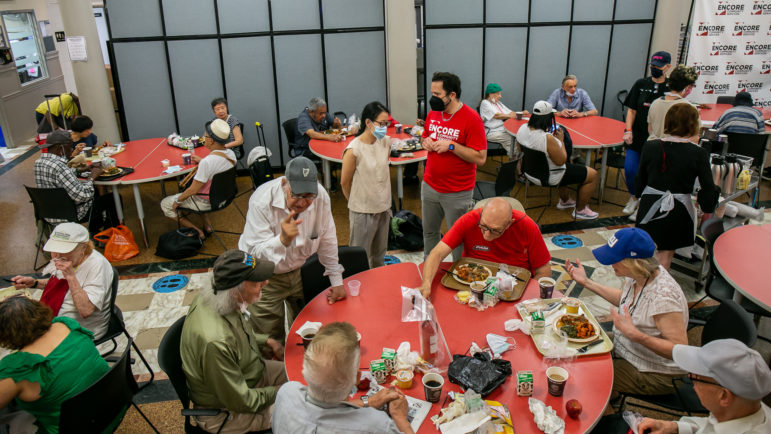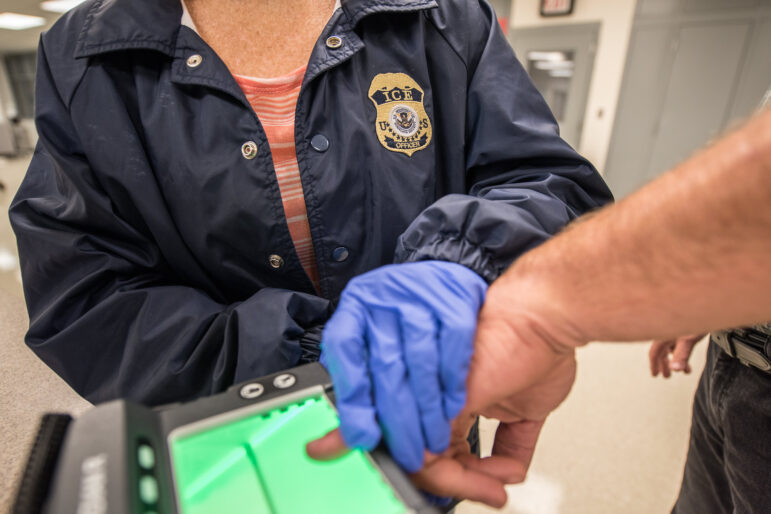A little over a decade ago, the City of New York realized it was sitting on some pretty hot property. Telecommunications companies began flocking to City Hall asking for the right to dig up streets and lay fiber optic cable beneath them–one of the fastest ways to the internet.
The city, realizing that these companies would be more than willing to pay for this right, drew up franchise agreements with each company, asking for two things: a franchise fee amounting to 5 percent of gross revenues, and the city’s right to use some of the fiber for its own use.
New Yorkers got a lot out of the agreements. First, government coffers got an injection of cash: Last year, the 12 companies that laid fiber underground paid the city a total of $25 million in franchise fees.
The city has also been able to use that fiber to run a municipal network called I-Net, which has wired about 60 municipal buildings and provides videoconferencing for courts and for the Board of Education’s Citywide Training Network.
But all that, and any future plans to expand public access to broadband fiber, may be in jeopardy.
In September, the United States Court of Appeals for the Second Circuit ruled that White Plains cannot require one of its telecom providers, Teleport Communications, to enter a franchise agreement with the Westchester County city. That’s because the Telecommunications Act of 1996 says municipalities must treat all telecom companies equally. Until now, in New York State, one company has always gotten treated better than equally: In one form or another, Verizon has existed since the late 19th century, long before cities demanded communications franchises and fees for the use of city streets. If Verizon continues to be excused, argued Teleport Communications in its lawsuit, why shouldn’t we be? The court agreed.
That decision may not bode well for New York City. While a case like TCG v. City of White Plains has never been brought against the Big Apple, some experts close to the case say the court ruling may apply when franchise agreements come up for renewal in a few years.
The Bloomberg administration is not taking any chances. Attorneys planned to file a brief in support of White Plains when that city appeals the case to the U.S. Supreme Court sometime this fall.
In the meantime, at least one member of the New York City Council is trying to figure out how the city can make up for a possible loss of revenue and free fast internet access. “I’d love to see a lot more educational institutions, libraries, senior centers, and underserved neighborhoods get broadband access,” says Councilmember Gale Brewer, chair of the Council’s Select Committee on Technology in Government. “There are tons of possibilities for public service.”
Her first proposal to City Hall: The city could build a broadband network of its own. A state- and federally sponsored program called NYSERNet serves as a model, one that has connected universities and research institutions to fast networks throughout the state. This option is not cheap; Brewer’s staff estimates it would require a multimillion-dollar capital investment. Brewer suggests the city could save a little cash by contracting with broadband companies to install fiber, much like Chicago recently did [see “The Underground Railroad,” February 2002].
Perhaps an even less expensive, though slower possibility: Going wireless. Brewer’s committee is studying the work of Anthony Townsend, a researcher at New York University’s Taub Urban Research Center and cofounder of NYC Wireless. His nonprofit advocacy group recently enabled free wireless access in Bryant Park and Bowling Green Park through partnerships with the public-private groups that run them. Good wireless installation, says Townsend, costs about $15,000 an acre to service outdoor spaces. Townsend also advised the city on its new wireless initiative for the public libraries, which Mayor Bloomberg announced in late October.
“I think it’s a less expensive technology for creating a citywide backbone,” Townsend says. He also recommends optical networks, which use a laser beam to broadcast at a distance of up to 40 miles.
Brewer’s committee plans to hold a series of public hearings this fall to discuss the options. While she admits it could take a while for some of these solutions to come to life, there is one thing that can be done now: the city could boost its efforts to use the current network at its fullest capacities.
At the time the original franchise agreements were drawn up–back when David Dinkins was mayor and Brewer was working in his Washington office–the thought was to use the fiber strands for public, educational and government uses. But these connections have not reached many of the city’s communities. Playing 2 Win, a community technology center in Harlem, spends about $400 a month for cable modems. While this is cheaper than the $900 T1 line that the group gave up on several months ago because of its cost and spotty service, the expense still puts a dent in the organization’s budget.
A cheap and reliable broadband connection “would be an excellent asset,” says Rahsaan Harris, executive director of Playing 2 Win, which each year provides about 700 local kids and adults access to computers and teaches them how to use them. There are dozens of centers like Harris’ in communities around the city.
In the end, the hope is that even if White Plains loses the appeal and companies pull the plug on franchise fees, telecom companies might continue to donate internet access, if only for one purpose. Says John B. Morris of the Center for Democracy and Technology, “Companies may still honor their promise to support public access for public relations reasons.”
Steve Gnagni is managing editor of Highbridge Horizon, a community newspaper in the southwest Bronx.








